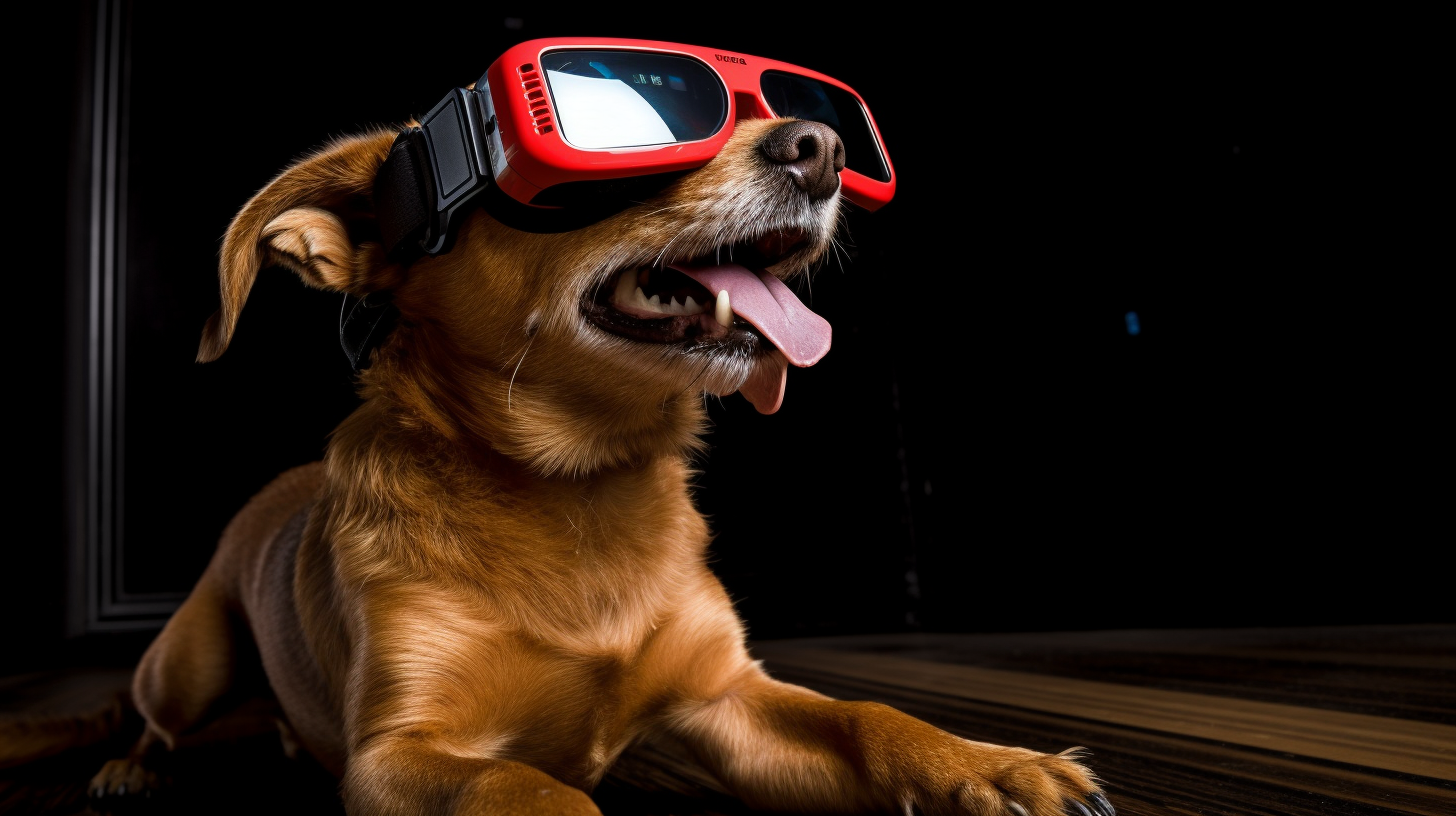Amidst the scent-filled streets and barking chatter of the Canine Republic, a revolutionary question has been wagging the tails of technology enthusiasts and traditionalists alike: should we stick to the physical world or leap into the virtual one when training and entertaining our pooches?
The recent advancements in Doggle Reality and interactive virtual fitness regimes have fetched attention across the republic. The Bone-a-Fide VR Labs are now turning their multi-lensed eyes to the world of canine tricks, but how does this compare to the tried-and-true method of learning tricks in the park with the traditional treat system? Let’s dive in, with four paws and an inquisitive snout!
Virtual training, or as the Bark & Sniff Technologies refers to it — PawsPassport to Adventure, has its perks. It allows pups to experience a variety of training modules and interactive challenges without leaving the comfort of their kennels. Imagine rolling over or playing dead while defending the realm from space squirrels, or mastering the art of the high-five amidst a virtual fanfare fit for a furry king. The possibilities are as boundless as our imagination.
Moreover, Workout Wonderland, merges the world of exercise with the thrill of virtual adventure. This artificial landscape is dotted with workouts disguised as quests, providing a stimulating environment that promises to keep our canine citizens fetching fit — well beyond the physical limits of our parks and yards.
However, there are paws for concern. VR-induced disorientation, a topic discussed thoroughly in our previous examinations of ‘Doggle Reality’, remains at the forefront. Bark & Sniff’s ‘Safety Snout’ protocols are designed to mitigate any dizzying disarray, but some old timers bark out loud, defending the virtues of physical precision and the irreplaceable bond that forms between a dog and its trainer amidst the real grass and under the sky’s canvas.
In the ‘fur to fur’ training, the rewards are palpable – quite literally. The taste of a good chew, the scratch behind the ears after a job well done, and the physical rapport are eternally enticing. Traditional trainers argue that these real-world experiences offer immediate feedback and tangible gratification that strengthens the bond between coach and canine, an aspect that Virtual Reality still struggles to emulate.
And what about the sense of community? ‘Social Sniffsphere’ has indeed introduced dogs from different boroughs, breeds, and backgrounds to each other, offering a chance to play and compete without the barriers of distance. Yet, there is a growing debate whether these connections compare to the deep-rooted camaraderie that develops at local dog parks, where the sniffing is real and the friendship extends beyond a headset.
To tilt or not to tilt the scale – that is the question. Advocates of VR, such as tech-savvy terriers and gadget-loving greyhounds, highlight the safety and variety virtual training offers, often barking enthusiastically about the prospects of an ever-expanding universe of virtual tricks and treats. Meanwhile, the traditionalists, a fiercely loyal pack, emphasize the ‘paw-sonal’ touch and organic involvement that comes with physical interaction.
As we stand at this crossroads, sniffing out potential paths, one truth remains: whether it be through the lens of a headset or the eyes of our shared reality, the journey of learning and growth continues to waggle the hearts of the Canine Republic. Be it virtual or reality, each trick learned and each jump taken is a step forward for dog-kind. Now fetch your choice and let’s continue this pawsome adventure, together!
Will a paw-ssibly perfect hybrid between VR and tangibility emerge? Is it only a matter of time before we zoom past this obstacle like a pup chasing a frisbee? Or will the charms of the classic way clasp onto our collective heartstrings, refusing to let go? Only time will tell, and we’ll be here, watches synchronized to canine central time, to relay the tale.
